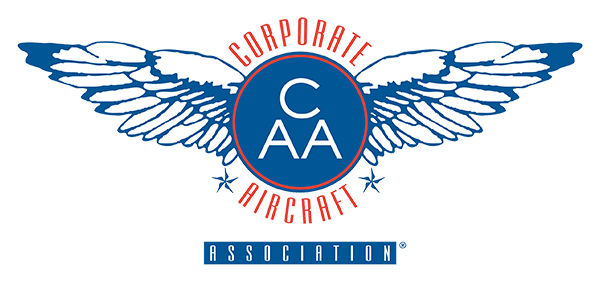Results 1 to 9 of 9
-
Username ProtectedStar Contributor
- Posts
- 745 Posts
- Thanked 507 times
- Phenom 300 Owner & Pilot
- Join Date
- Joined Oct 2020
10-25-2020, 09:34 AM #1
#1
Friendly reminder that we have CVRs...
I just finished writing the Phenom Incidents and Accidents wiki, it was a good reminder that we have Cockpit Voice Records in our aircraft and they will be used during an investigation... so fly each flight like you would like it to read in an NTSB report

Each of these NTSB dockets have CVR transcripts:
https://data.ntsb.gov/Docket?ProjectID=79221
https://data.ntsb.gov/Docket?ProjectID=90420
https://data.ntsb.gov/Docket?ProjectID=90419
https://data.ntsb.gov/Docket?ProjectID=87694
https://data.ntsb.gov/Docket?ProjectID=90106 -
Username ProtectedStar Contributor
- Posts
- 745 Posts
- Thanked 507 times
- Phenom 300 Owner & Pilot
- Join Date
- Joined Oct 2020
10-25-2020, 08:29 PM #3
#3
Thanks, it will be interesting to do some further deep dives into the accidents, specially the ones with full NTSB dockets. Most of these occurred before I joined the Phenom community. Also working on a separate Wiki article showing all the BCU improvements over the years.
What I learned so far (or maybe previously learned and forgot) is that our wet unfactored runway numbers appears to not be flight tested or even modeled! Just dry * 1.25. Need to get a better understanding on this.
From the NetJets submission in this https://data.ntsb.gov/Docket?ProjectID=90106
The requirements for landing distance performance calculation are defined in aircraft certification standards as outlined in 14 CFR 23.75 and 25.125. The Embraer Phenom 300 is a Part 23 certified aircraft. Neither Part 23 or 25 specify the method for which wet landing data should be calculated for certification purposes. The result is that no standards exist for the calculation of wet landing performance data as presented in the Aircraft Flight Manual (AFM).
As stated in SAFO 06012, “Wet and contaminated runway landing distance data are usually an analytical computation using the dry, smooth, hard surface runway data collected during certification.” In the case of the Phenom 300, Embraer added a 25 percent safety factor over the dry landing distances rather than using any modeled or flight test data.
The chart shown below from the performance report illustrates the difference in the models and actual performance of the aircraft. The NASA CFME model most accurately matched the aircraft performance in this event and has been validated in a number of other runway overrun events documented by the NTSB. The resulting difference between actual and expected braking performance on the wet runway was approximately 23 percent.
From the NTSB report itself:
Nonetheless, the braking friction deficit observed in this accident showed that the stopping performance of the airplane was more consistent with AFM landing distances for runways contaminated with standing water than for runways that were merely "wet" even though it was determined that the runway could not have been flooded. -
Username ProtectedReally Frequent Poster
- Posts
- 208 Posts
- Thanked 65 times
- Phenom 100 Owner & Pilot
- Join Date
- Joined Oct 2020
11-20-2020, 01:15 PM #5I find the numbers are pretty close to the book on dry or wet runways. The issue in my opinion is that this is a very squirrelly aircraft with brake by wire and no feedback to the rudder pedal. It takes total concentration dry or wet. I believe another Phenom 100 just went off the side of the runway at KPWK. So my real world advice is fly with a mentor until you’re very comfortable. Stay totally focused.
I’ll send a chart that shows an interesting anomaly that I’ve shared with others. No answer from EMB why increasing weight and temperature improves runway performance. -
Username ProtectedFrequent Poster
- Posts
- 139 Posts
- Thanked 74 times
- Phenom 300 Owner & Pilot
- Join Date
- Joined Nov 2020
11-24-2020, 04:10 PM #6I don’t pretend to fully understand the mystery of takeoff performance charts, but you will note that the runway length requirement is closely correlated to V1 speed at low weights. At higher temperatures they call for a lower V1 speed which allows for a shorter runway length. Presumably that is because the runway length is being dictated by accelerate stop distance at those weights and temps so a lower V1 needs less runway.
I don’t really know exact magic for deciding the V1 speed in each config, but it probably needs to be lower at higher temperatures due to reduced single engine climb performance and the inability to hit required climb gradients at those temps. -
Username ProtectedReally Frequent Poster
- Posts
- 208 Posts
- Thanked 65 times
- Phenom 100 Owner & Pilot
- Join Date
- Joined Oct 2020
11-24-2020, 07:28 PM #7(Username Protected), that makes a lot of sense...but it does go against intuition that higher gross weight and higher temperature equals less takeoff performance-HHH.
(Username Protected) is going to set up a section to ask these mystery questions that hopefully Embraer will provide some insight. -
Username ProtectedFrequent Poster
- Posts
- 102 Posts
- Thanked 123 times
- Phenom Instructor/Mentor
- Join Date
- Joined Oct 2020
12-22-2020, 03:11 PM #8(Username Protected)-
The anomaly you bring up is due to VMC limiting V1.
As the temperature increases, the thrust output of the engines decrease. With lower thrust, VMC for ground (VMCG) and air (VMCA) decrease.
V1 cannot be lower than VMCG (and actually has to be even a little above it), and VR cannot be less than VMCA (plus a small margin). V2 is also limited by VMCA.
Sooo...what we end up with is a situation where the lower thrust of high temps paradoxically results in lower V speeds, and thus lower takeoff field length requirements. Climb performance will be much worse, however, and may end up the real limit at high temps.
- Quick Links
- New Posts
- Participated
- Subscribed
- Today's Posts
- Hot This Week


 Reply
Reply






















